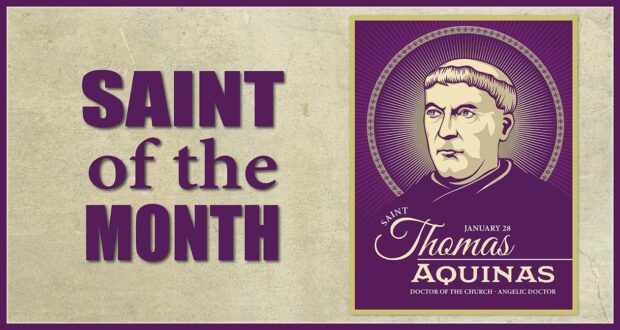Summary
Thomas’s writing blended Aristotelian philosophy and Christian theology and was adopted as the official philosophy of the church in 1917.St. Thomas was born in 1226 in the castle of Roccasecca in the old county of the Kingdom of Sicily, now known as the Lazio region of Italy. Thomas’ parents possessed a feudal domain and were modestly wealthy. Thomas, the youngest son, was expected to enter the church and achieve a position that could help his family in disputes with the Pope and the Emperor.
As a young boy, St. Thomas was placed in the monastery of Monte Cassino and remained there until being sent home when the emperor expelled the monks for being too loyal to the pope. His parents then sent him to the University of Naples, where he decided to join a new order, the Dominicans, which was dependent on begging for alms. His parents were horrified at this news, their plan to have him be an influential member of the clergy being in jeopardy. His mother had his brothers kidnap him and bring him home to the castle of Monte San Giovanni Campano. Thomas was held captive for one year while his family tried to persuade him to give up the Dominicans. During this time, Thomas was visited by angels, which gave him the strength to resist his family. He finally escaped the castle, fleeing to Naples and then to Rome to the Dominican Order.
The Great Prediction
Thomas began studies at the University of Paris, where his classmates called him “dumb ox” because he was very quiet. The scholar Albertus Magnus, himself destined to be called “The Great,” said, “You call him the dumb ox, but, in his teaching, he will one day produce such a bellowing that it will be heard throughout the world.”
And so, he did.
St. Thomas spent the rest of his life teaching and writing documents that blended Aristotelian philosophy and Christian theology, the most well-known of which is the Summa Theologica. His work influenced Catholic doctrine from then on and was adopted as the official philosophy of the church in 1917.
St. Thomas died on March 7, 1274, and Pope John XXII canonized him in 1323. Pope Saint Pius V proclaimed him a Doctor of the Church in 1567 and named him Angelic Doctor to honor his admirable chastity of life. His feast day is January 28.
After receiving the last rites, St. Thomas said, “I receive Thee, ransom of my soul. For love of Thee have I studied and kept vigil, toiled, preached, and taught.”
Download the free Saint of the Month poster designed by Emily Prause using the button below. You can pin it to your classroom wall or place it on your refrigerator to help your children learn more about St. Thomas Aquinas.
Download Printable Saint PageClick here for more Saint of the Month posters!

 Seton Magazine Catholic Homeschool Articles, Advice & Resources
Seton Magazine Catholic Homeschool Articles, Advice & Resources
